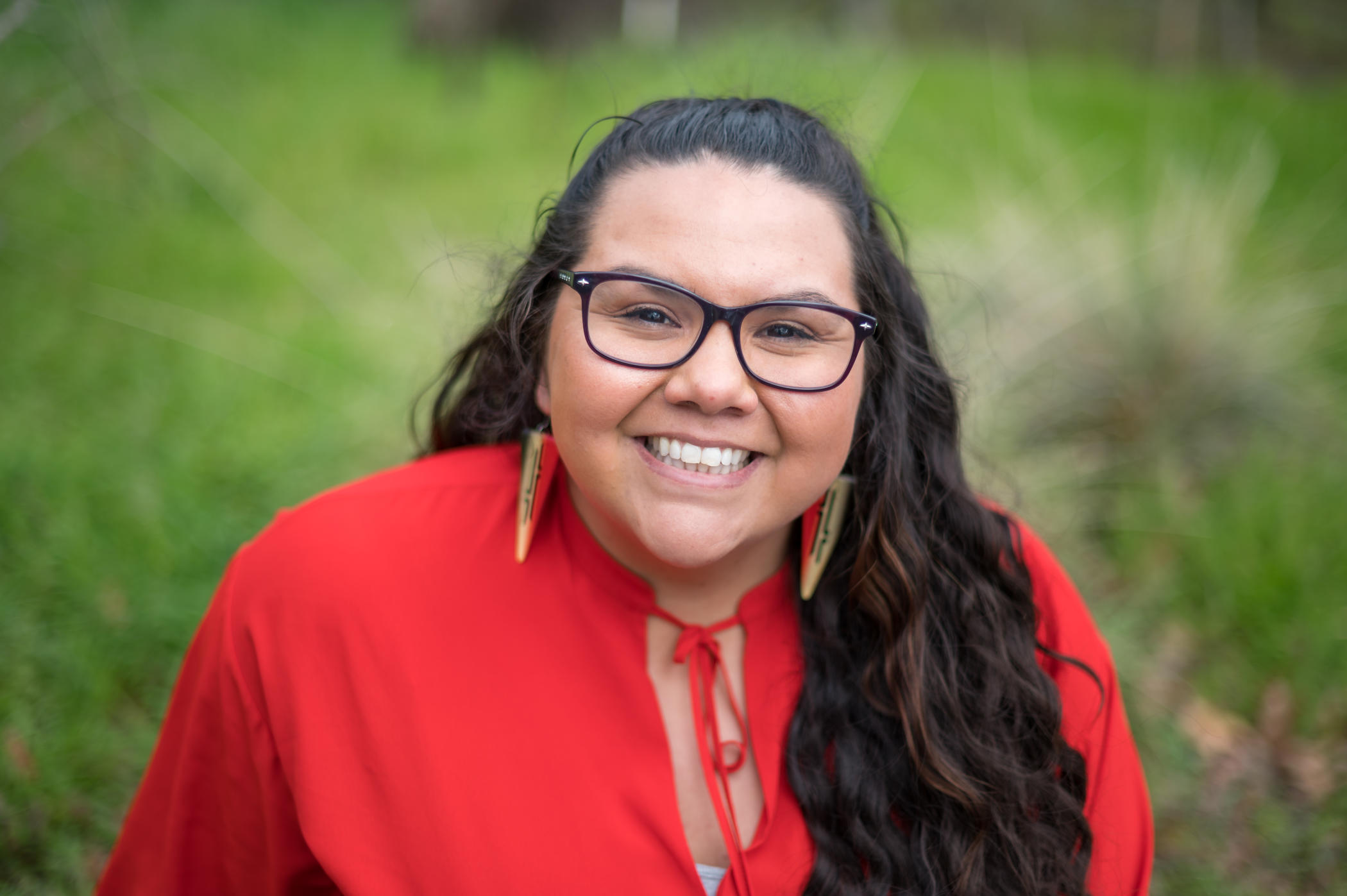Crash Course: American Indian Storytelling

“How did we get here?”
This question is central to Multicultural and Gender Studies (MCGS) assistant professor Deserea Langley (Paiute and Shoshone) in her “American Indian Storytelling/Oral Narrative” class. Taking over for MCGS colleague and course creator Browning Neddeau while he is on leave, Langley explores the oral tradition of creation stories and challenges her students to examine their personal perceptions of other narratives.
“Most of our students come with their own background of how the world started, whether it’s Biblical understandings of creation, having various understandings of the Big Bang Theory, or even thinking about how Native American people arrived in this land, like the Land-Bridge Theory,” she said.
The course—which fulfills the CSU’s ethnic studies requirement—is not limited to examining the past. Selected readings and studies place Native people in the present tense while also honoring their ancestors, particularly in the North State. Several Indigenous guest speakers provide context and testimony that they are not just part of the fabric of history but central to contemporary life in the 21st century.
“I find people saying, ‘Native people used to live here,’ as if they’re a part of history. No, these people are still here, and they’re still telling their stories,” said Langley. “Having people tell their own stories is important for them to be represented in ways that show that these people exist and they are part of the modern day.”
Langley introduces local voices and communities to her students as guest speakers in the class. For example, Mechoopda Tribal Historic Preservation Officer Kyle McHenry offers the Mechoopda story of creation, which could challenge students to expand their understanding—while reiterating that Maidu culture is a thriving culture.
Freshman anthropology major Annie Belter took the class because it would augment what she is learning as a budding visual anthropologist and her current project on Indigenous plant species and apothecary care.
“I’ve learned so much in this class about Native Americans and their relationship with plants and the earth in general,” she said. “Theirs is a history that’s not talked about and a present-day culture that’s not really talked about—it’s something that should be acknowledged more.”
Born and raised in Susanville, Langley has remained in Northern California her entire life, having earned her bachelor’s degree at Sacramento State and her master’s degree and PhD from the University of California, Davis. She came to Chico State after serving as associate director of UC Davis’ Native American Student Success Center.
Langley’s desire to continue working close to home comes from her staunch belief that she could accomplish more working in her community to promote access for Native American students in higher education—“I want to see Native American students strive and thrive in higher education. I am aware of how much our communities need educated professionals to build futures,” she said.
Langley notes that in addition to their oral tradition, Indigenous people have long employed different ways of keeping historical records.
“The Sioux people—the Lakota, Dakota, Nakota people—would use things like buffalo robes,” she said. “We have petroglyphs, and the Q’eqchi’ in South America use knots. There are always different ways of recording history and the world around them.”
Langley teaches that even though Native people use storytelling to teach their history—only recently have they been writing things down—the practice is just as important today.
“It’s a contemporary story of fighting historical injustices, it’s a story of environmental justice,” she said. “One of the questions I ask my students is, ‘how do you plan to be a good ancestor?’ You could tell they realized, ‘wow, I’ve never been asked that question.’ We’re not often reflective in that way.”
For time immemorial, oral tradition has been a way for Indigenous cultures to communicate and tell their stories—from recognizing the coming seasons and sharing Trickster stories to identifying danger and the origin stories of land formations. And through classes like Langley’s, as well as accurate and respectful depictions of Indigenous cultures, she hopes for a future where the oral tradition continues to provide a sense of place.
“We’ve been able to situate ourselves on the land through the presence of oral tradition and our knowledge and it helps people connect with the land and people before them. And it will help connect people after them because we’ll continue telling these stories,” she said. “There will be people after us, so how are we going to make sure our stories or our perspectives matter?”


